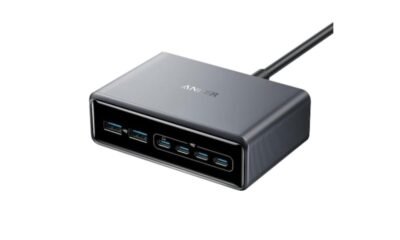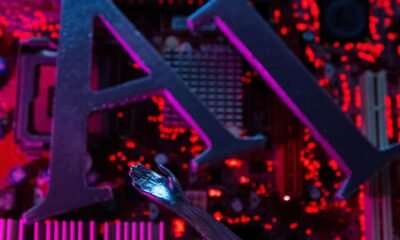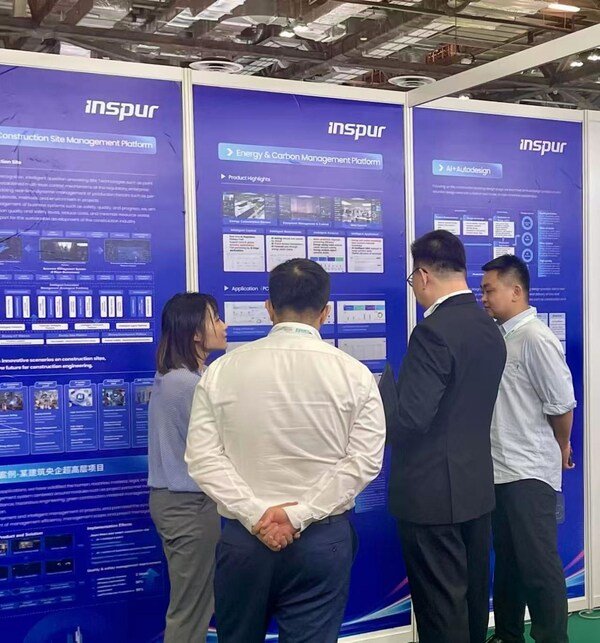Tools & Platforms
Apple’s plan for AI could make Siri the animated center of your smart home

Apple is developing a bunch of products and features to deliver its vision of AI, including multiple robots, a smart home display, and a revamped version of Siri with new technology powering it, according to an extensive report from Bloomberg. The company’s generative AI efforts lag those from other big tech companies, and it delayed some upgrades to Siri earlier this year, but these rumored new initiatives point to the smart home as a key place for its AI technology
One of the robots is apparently a tabletop robot that “resembles” an iPad mounted to an arm that can move around and follow users as they move around a room, Bloomberg says. Apple has already shared a preview of what this could look like: earlier this year, the company published research showing a tabletop robot that looks like a real-life version of the Pixar logo with a lamp on the end of the arm. In videos, it’s quite charming — it can even dance.
A key part of the device, which Apple is aiming to launch in 2027, would be a more visual version of Siri that users could have more natural conversations with, like what’s possible with ChatGPT’s voice mode. Bloomberg says Apple has tested using an animated take on the Finder logo for Siri, but the company is also apparently thinking about ideas that are more like Memoji. Apple is also revamping Siri so that it’s powered by LLMs.
Apple is working on other robots, too, including an Amazon Astro-like robot that has wheels, and it has “loosely discussed” humanoid robots, according to Bloomberg.
By the “middle of next year,” Apple plans to launch a smart home display that will let you do things like control your smart home, play music, take notes, and do video calls, Bloomberg says, and this device could have the new look for Siri. The display and the tabletop robot may have a new OS that can be used by multiple people, and could be able to personalize what’s shown to a user by scanning their face with a front-facing camera. Bloomberg says the smart home screen resembles a Google Nest Hub but has a square display.
In addition to the smart home display, Apple is also working on a security camera, and it plans to develop “multiple types of cameras and home-security products as part of an entirely new hardware and software lineup,” Bloomberg says.
Tools & Platforms
Laptop or tablet? Plus, power packs, headphones and AI advice – The Irish Times
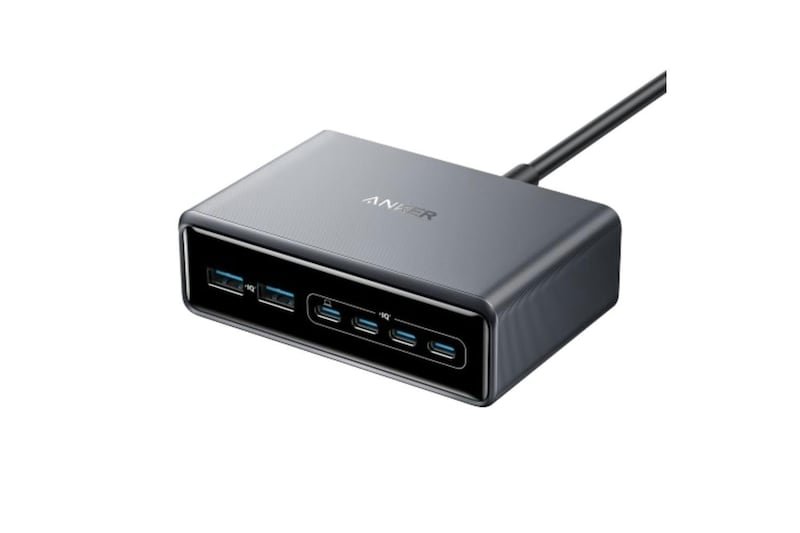
College students are coming back to their lecture halls this week or starting out on their third-level studies. If you are an incoming first year, there is plenty to get to grips with, from reading lists and schedules to travel passes and finding your way around the campus.
On top of that, you probably have some extra technology requirements. Perhaps a laptop upgrade is on the cards or you might think of investing in a tablet.
So what are the tech essentials and what are simply nice to have?
Laptops
The laptop is not yet dead, despite some predictions of its demise. In fact, things seem to be going well for the device the tablet was supposed to replace.
Picking the right one can be difficult, though; you need to strike a balance between a laptop that will last a few years and not overpaying for technology you don’t actually need. In other words, the top-spec machines are great but they aren’t necessary for everyone.
There are some things to consider before you make your choice. First is the size of the device. If you plan on carrying it around everywhere, something reasonably compact and light is best. Most people find the 13- to 14-inch screens offer the best balance in terms of portability while still giving you enough room to work with.
That should cover you for creating documents, browsing online, editing images and videos, and creating content for your social channels if that is what you are into.
For those who need something with a bit more screen space – for design, perhaps – a 15-inch display might suit better, but will be more clunky to carry around.
Once you have decided on the size, it is time to look at its main components. Think of the processor as the brain of the computer. On a budget, the AMD Ryzen 3 series or Intel Core i3 will be fine for web browsing and word processing.
Moving up the chain, AMD’s Ryzen 5 offers a good balance of performance and efficiency, comparable to the Intel Core i5 chip. For more demanding tasks, the Ryzen 7 or Core i7 chips are worth considering, although they will incur a higher cost.
Then you get into RAM, which will allow your computer to deal with heavier workloads and run more tasks at once without stuttering to a halt. Windows requires a minimum of 4GB. Bumping it to 8GB is sufficient for basic workloads.
To ensure your computer lasts longer, consider upgrading to 16GB if possible. Video editing, photo editing, gaming and other power-hungry applications will need more RAM, so consider your future needs too.
And when it comes to on-board storage, aim for 512GB if you can. You can supplement it with external and cloud storage, but that requires either carrying around a second device – not ideal if you want to stay mobile – or an internet connection, which isn’t always possible.
Mac versus Windows is the ongoing battle, but ChromeOS is also an option for students on a budget, or Linux if you are technically inclined. The decision will ultimately depend on what software you need to run. If you have no specific requirements, then your choices are much wider. Some students will need to run specific software for their course – computer-aided design programmes, for example – that will have minimum system requirements.
Power
If you have a new-ish laptop with a power-efficient chip, you probably won’t run into too many issues with your device’s battery. But occasionally, they take a battering, and when you find your battery dwindling to alarming levels, having some sort of backup is handy.
Doing more with less is a good approach, and these days most devices can be charged over USB-C, thanks to some heavy nudges from the European Commission. In theory, you could carry one charger in your bag and power all your devices at various times throughout the day.
If you need more than one device charged, though, something with multiple USB options is a good idea. Take the Anker GaNPrime 200W Charger (€90, Harvey Norman). Not only does it charge both USB-A and USB-C devices, it can also power up to six devices simultaneously.
It has a total power rating of 200W, which means you can charge two 14-inch MacBook Pro devices in under half an hour or several USB-C-enabled smartphones simultaneously. It also has a built-in protection system to make sure your devices charge safely and at a suitable temperature.
However, there will inevitably be a time when you are away from a power outlet and caught with a low battery. The Chargeasap Flash Pro Plus ($200, chargeasap.com), a graphene 25000mAh battery, cannot only charge your smartphone and Apple Watch, but also your laptop.

Noise-cancelling headphones
If you don’t already own a pair of these, you need to invest in some, asap. Not only can they help you to block out the bus noise on the commute home, they may also save your sanity in the library around exam time. Among the best in the over-ear category are the Sony WH-1000XM6 (€450, Currys).
Apple users may prefer the in-ear AirPods Pro (€279, Apple), but there are plenty of options out there that will cross the platform barrier and work with your laptop too, such as the Bose QuietComfort Active ear buds (€150, Harvey Norman)
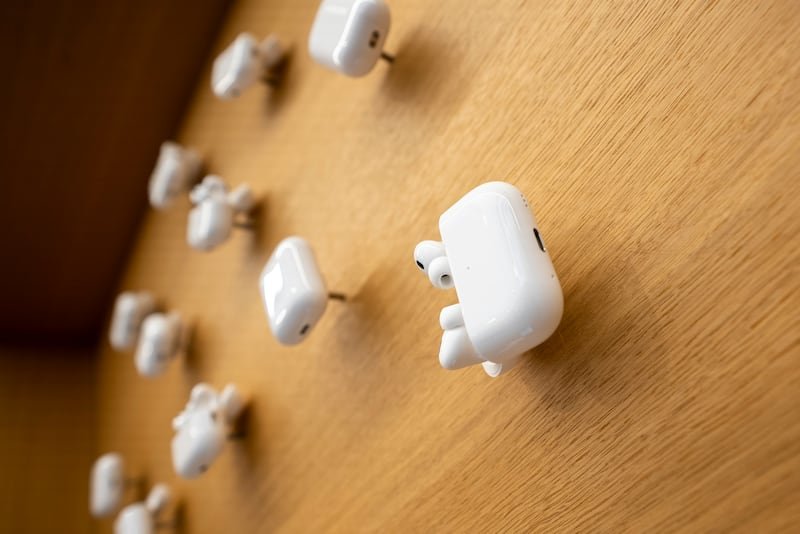
If you are just in need of some decent earplugs without any added distraction, however, the Loop Quiet 2 (€20, Loop.eu) will block out enough noise to help you focus.

AI
Artificial intelligence is creeping into our daily lives, from AI-enabled chatbots talking us through customer service nightmares to research assistants that can create podcasts from our documents and debate the finer points of our research topic.
The capabilities out there vary, however. Apple is still trailing slightly on AI integration. although devices such as the iPhone 15 Pro and Pro Max, and newer models, support the handful of Apple Intelligence features that have been launched in Europe. That includes tools to manage your inbox, refine messages and documents, and edit photographs. Broader searches call in ChatGPT.
Samsung and Google have taken it a step further. Gemini, Google’s AI-enabled assistant, has now become the default assistant on your smartphone, with its latest Gemini machine learning models and chatbots integrated into the system.
There are other ways to use AI, however, assuming your college course allows it. Grammarly, for example, will help you polish up college projects and essays, while also keeping an eye out for potential plagiarism, assuming you take out the Pro subscription at €144 for the year. Its verdict on this article, for example, was a resounding “zero copied text”.
[ I have advice for prospective third-level students, and it’s not what you thinkOpens in new window ]
ChatGPT, meanwhile, can help you research a specific topic with its latest GPT-5 model which, according to founder Sam Altman, has “PhD level intelligence”. Whether you buy into that or not, ChatGPT can be a handy research partner. Just remember, as with all AI, to check up on its sources before you believe what it tells you.
The current favourite AI-enabled tool around here though is Google’s NotebookLM. Free to use, you can create notebooks for research topics with up to 50 sources each. The AI will then analyse the sources and explain it to you in bullet points, create an FAQ-style sheet or study guide, or even generate an AI podcast, where two synthetic hosts discuss the topic in detail.
Tools & Platforms
Deutsche Telekom Leverages n8n’s Automation Platform to Power Next-Gen AI Agents

AI agents are currently the dominant topic in the digitization scene. Deutsche Telekom announced its partnership with n8n. The German startup from Berlin, which is popular with developers and investors, is a specialist in the digitization of repetitive workflows.
n8n is currently valued far beyond the threshold of 1 billion euros. Deutsche Telekom relies on n8n for the development of AI agents for its business customer division. Whether in production, logistics, accounting or sales and marketing: the application scenarios are diverse, especially in medium-sized companies.
AI agents for all cases
AI agents are software programs that independently plan tasks, take measures and make decisions for a specific goal with the help of artificial intelligence, without constant human guidance. N8n is an open-source workflow automation platform. Depending on the use case, different apps, interfaces and services can be combined with each other. The code is created by the AI. Only basic programming knowledge is required. The offer is primarily aimed at medium-sized companies.
Three different models serve as the basis for the development of tailor-made AI agents:
-
Out-of-the-box standard AI agents for simple tasks such as appointment finders or interactive voice response systems (IVR) -
AI agent modular system for creating custom agent flows via drag and drop -
Fully individualized AI agent flows with customized service
The first pilot projects are testing its use, for example in logistics: Until now, freight documents have been passed on manually. This process is now taken over by an AI agent.
Deutsche Telekom has been using artificial intelligence for many years. The group relies on partnerships for the best AI solutions on the market and collaborative development. The following applies: AI should solve business problems and increase productivity – while maintaining a focus on the well-being of people.
Gartner predicts that by 2028, AI agents will take over 20 percent of interactions in online stores. In the workplace, they will make 15 percent of everyday decisions, according to the market research institute, up from zero percent in 2024. And: By 2028, 33 percent of software in companies will contain agentic AI, compared to less than one percent in 2024.
Maximilian Ahrens, Managing Director T Digital, Telekom Deutschland
We are very proud that we are working with what is currently the most prominent tech startup from Germany. With n8n’s platform and technology, we make it easy for our customers to implement AI-supported processes and future-proof their business
Tools & Platforms
Shandong Inspur Intelligent Building Technology Showcases AI-Driven Solutions at BEX Asia 2025

SINGAPORE, Sept. 11, 2025 /PRNewswire/ — Shandong Inspur Intelligent Building Technology Co., Ltd. (“Inspur Intelligent Building”), a leading provider of smart building solutions, took center stage at BEX Asia 2025, unveiling its latest advancements in AI-powered smart building systems. Organized by leading global event management company Reed Exhibitions, the exhibition opened on September 3, 2025, at the Marina Bay Sands Expo & Convention Centre in Singapore.
As one of the largest specialized building and construction exhibitions in Southeast Asia, this year’s edition introduced an innovative “four-in-one” exhibition format, co-locating InnoBuild, MCE Asia, and Smart Cities & Building Asia. Centered around the core themes of “Productivity, Sustainability, Energy Efficiency, and Intelligence”, the integrated events brought together resources from across the construction ecosystem to build a professional platform for technology exchange, trend exploration and partnership development.
BEX Asia 2025 attracted over 3,000 global leaders, entrepreneurs, and policymakers across more than 150 exhibition booths. During the event, industry frontrunners expressed strong interest in fostering dialogue on innovation and accelerating the transition to a more sustainable and connected built environment. As a leader in smart building transformation, Inspur Intelligent Building showcased its latest breakthroughs and real-world applications in the integration of artificial intelligence and building technologies, offering scalable, future-ready solutions for developers, owners, and operators.
At the exhibition, Inspur Intelligent Building showcased its integrated applications of AI across the building lifecycle:
- Modular Building Systems: Combining efficient prefabrication, flexible assembly, and intelligent adaptation to deliver cost-effective residential and commercial spaces, reinforcing competitiveness in global markets and the company’s commitment to sustainable building practices;
- AI-Enhanced Design Automation: Enabling human-machine collaboration to standardize and streamline construction design processes;
- Intelligent Site Management Platform: Incorporating AI-powered image recognition, advanced query tools, building information modeling (BIM), and point-cloud imaging to enable real-time project monitoring and precision management of project resources;
- Smart Living Solutions: Delivering a unified IoT platform for whole-home connectivity and intelligent automation, enhanced by large AI models to create personalized occupant experiences;
- Sustainable Building Technologies: Offering a cloud-edge product suite including AI-driven energy optimization, energy and carbon management platforms, and AI edge workstations, designed to help clients reduce energy use and carbon footprint.
Throughout the exhibition, visitors from Singapore, Europe, Southeast Asia and other global markets engaged with Inspur Intelligent Building’s technical team to explore its comprehensive portfolio for AI-assisted design, green building systems, energy and carbon management platforms, smart campus and industrial park systems, intelligent construction sites, and prefabricated steel structures. Live demonstrations and case studies illustrated the company’s engineering expertise and real-world applications, earning positive recognition from industry partners.
This first appearance at BEX Asia 2025 marked an important milestone in Inspur Intelligent Building’s international expansion and opened new growth opportunities in Southeast Asia. Looking ahead, the company plans to continue investing in R&D for AI-enabled smart building technologies, grow its solution ecosystem, and accelerate international growth—supporting the digital, intelligent, and sustainable transformation of the built environment worldwide.
Source: Shandong Inspur Intelligent Building Technology Co., LTD.
-

 Business2 weeks ago
Business2 weeks agoThe Guardian view on Trump and the Fed: independence is no substitute for accountability | Editorial
-
Tools & Platforms4 weeks ago
Building Trust in Military AI Starts with Opening the Black Box – War on the Rocks
-

 Ethics & Policy2 months ago
Ethics & Policy2 months agoSDAIA Supports Saudi Arabia’s Leadership in Shaping Global AI Ethics, Policy, and Research – وكالة الأنباء السعودية
-

 Events & Conferences4 months ago
Events & Conferences4 months agoJourney to 1000 models: Scaling Instagram’s recommendation system
-

 Jobs & Careers2 months ago
Jobs & Careers2 months agoMumbai-based Perplexity Alternative Has 60k+ Users Without Funding
-

 Podcasts & Talks2 months ago
Podcasts & Talks2 months agoHappy 4th of July! 🎆 Made with Veo 3 in Gemini
-

 Education2 months ago
Education2 months agoMacron says UK and France have duty to tackle illegal migration ‘with humanity, solidarity and firmness’ – UK politics live | Politics
-

 Education2 months ago
Education2 months agoVEX Robotics launches AI-powered classroom robotics system
-

 Funding & Business2 months ago
Funding & Business2 months agoKayak and Expedia race to build AI travel agents that turn social posts into itineraries
-

 Podcasts & Talks2 months ago
Podcasts & Talks2 months agoOpenAI 🤝 @teamganassi


